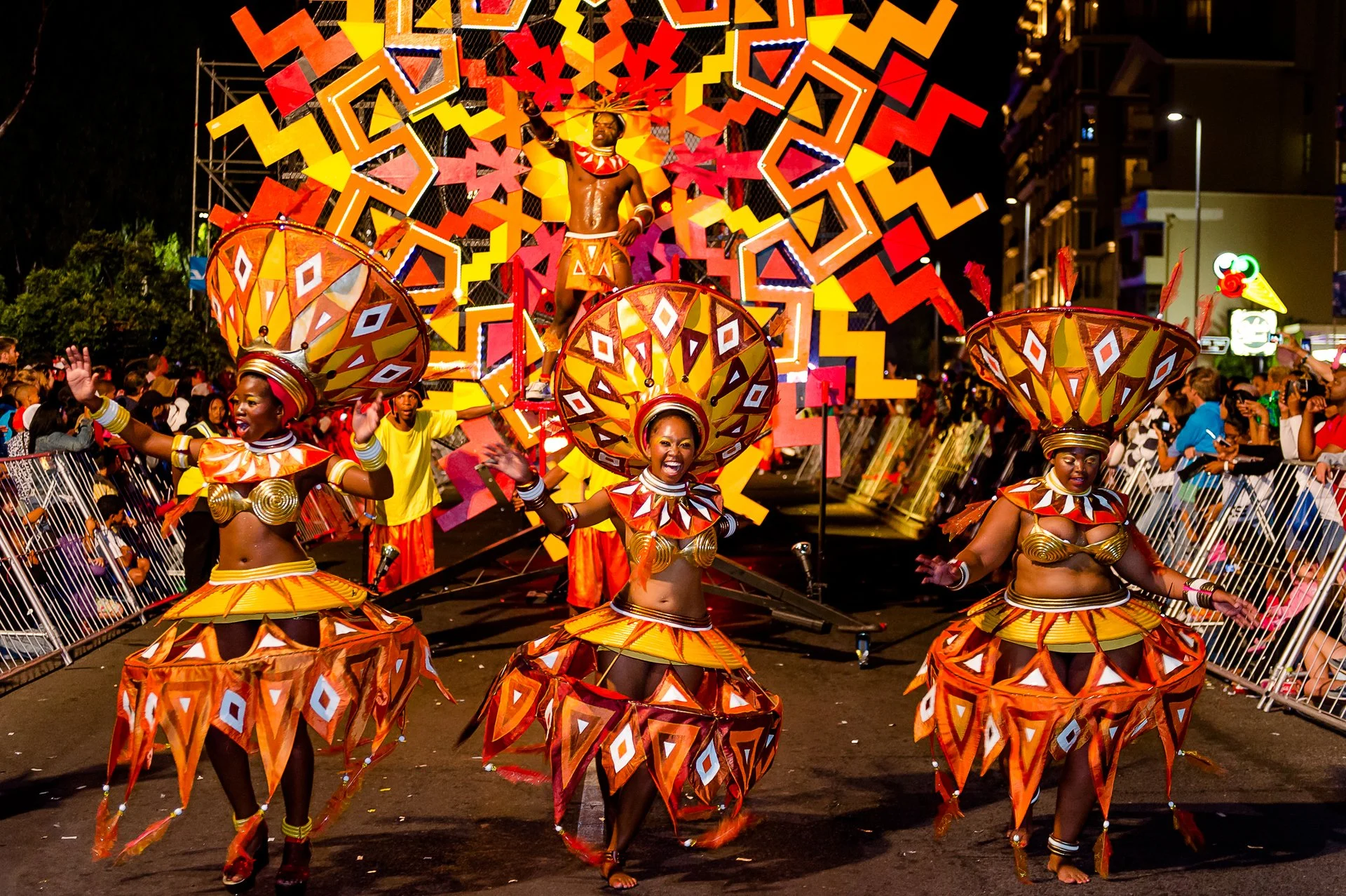Nestled at the southern tip of Africa, Cape Town is a city renowned for its breathtaking landscapes, rich history, and vibrant cultural tapestry. Among its many cultural celebrations, the Cape Town Minstrel Carnival stands out as a unique and exuberant event that captures the spirit and diversity of South Africa. Also known as Kaapse Klopse, this annual festival is a kaleidoscope of music, dance, and color that has become an integral part of the city’s identity.
The origins of the Cape Town Minstrel Carnival can be traced back to the early 1800s, when enslaved people and those of mixed-race descent, known as Cape Malays, would gather to celebrate the end of the slave owners’ Christmas festivities. Drawing on a blend of African, European, and Asian influences, they created a unique form of expression that combined music, dance, and costume. Over time, this tradition evolved into the grand spectacle that is the Minstrel Carnival.
The carnival typically takes place on the second New Year’s Day of the year, a date that reflects the historical influence of the Dutch settlers who celebrated the second New Year according to the Julian calendar. The event begins in the early hours of the morning, with groups of minstrels, known as troupes, parading through the streets of Cape Town, particularly in the districts of District Six, Bo-Kaap, and the Cape Flats.
At the heart of the carnival are the troupes, which can number anywhere from a few dozen to several hundred members. Each troupe is led by a conductor, who not only directs the music but also plays a key role in the organization and choreography of the troupe’s performance. The minstrels are easily recognized by their bright, colorful costumes, which often include elaborate hats, waistcoats, and bow ties. The costumes are a nod to the 19th-century American minstrel shows but have been reinterpreted and imbued with a distinct South African flair.
Music is the lifeblood of the Cape Town Minstrel Carnival. The sound of the bands, known as “klopse,” fills the air, featuring an array of instruments such as banjos, concertinas, guitars, drums, and the unique Cape flute. The songs are a mix of traditional South African tunes, folk songs, and original compositions, often with lyrics that tell stories of love, life, and the struggles of the past. The music is infectious, with rhythms that compel onlookers to tap their feet and sway to the beat.
Dance is another central element of the carnival. The minstrels perform a variety of dances, including the “coon dance,” which is characterized by high-energy steps and intricate footwork. The dancers move in synchronized patterns, their movements a testament to the hours of practice and dedication that go into preparing for the carnival.
The Cape Town Minstrel Carnival is more than just a celebration of music and dance; it is a reflection of the city’s complex history and the resilience of its people. It is a time when the community comes together to honor their ancestors and to celebrate their cultural heritage. The event also serves as a platform for social commentary, with many troupes using their performances to address contemporary issues and to pay tribute to the struggles against apartheid.
Despite its popularity, the Cape Town Minstrel Carnival has not been without controversy. Critics have pointed out that the use of blackface and certain caricatured costumes can be seen as perpetuating racial stereotypes. In response, there have been efforts to reform the carnival, to ensure that it remains a respectful and inclusive celebration of culture and diversity.
The Cape Town Minstrel Carnival is a testament to the enduring spirit of the people of Cape Town. It is a celebration that transcends the boundaries of race, class, and creed, bringing together people from all walks of life to share in the joy of music, dance, and community. As the city continues to evolve, the Minstrel Carnival remains a cherished tradition, a vibrant expression of South Africa’s rich cultural heritage and a symbol of hope and unity for the future.
